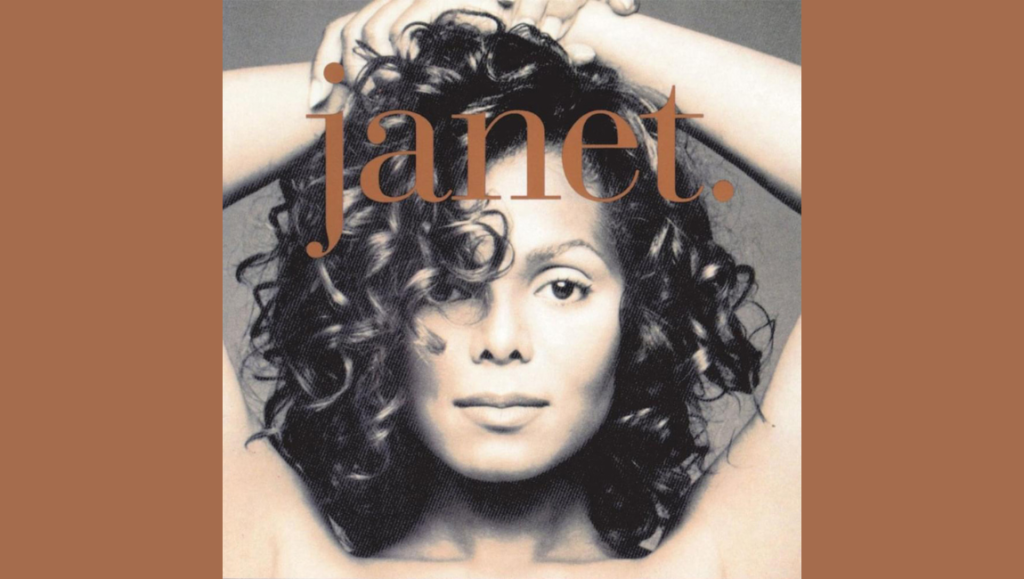In 1972, struggling to follow up his generation-defining and career-redefining What’s Going On, Marvin Gaye had writer’s block. The ambitious concept album detailing the social strifes of the Vietnam era was hailed as groundbreaking and had become Motown’s biggest record to date. Following its success, Gaye renegotiated his contract with the label, winning more creative control and a million dollar record deal — making him the highest-earning Black artist at the time. With this newfound freedom, Gaye switched gears from the socially conscious songwriting of What’s Going On and dove headfirst into the erotic. 1973’s Let’s Get It On pushed the limit on sexual themes in popular music and served as a blueprint for quiet storm and slow jam R&B. In 1993, when asked by author David Ritz which artists have had the biggest influence on her musically, Janet Jackson broke into a grin. “Aside from my brothers… Marvin Gaye, Stevie Wonder… and jazz.” Marvin’s moves during this period offer the closest prototype to the kind of moves Janet made between her fourth album, Rhythm Nation, and her fifth, janet., which celebrates its 30th anniversary this month.
On the heels of two number-one records, Janet was at a crossroads in her career. Her breakthrough album, 1987’s Control, saw her declaring herself in charge of her life and destiny. Terminating all business arrangements with her family, Janet teamed up with producers Jimmy Jam and Terry Lewis, then little-known Prince associates, to reinvent herself on her own terms. The result was a critical and commercial success. Control made Janet a teen sensation, and its bubbly and mechanical synth soundscape helped pioneer the new jack swing genre. Rather than making a Control Part 2, Janet and her collaborators reached for a more ambitious project, 1989’s Janet Jackson’s Rhythm Nation 1814, which served as her political awakening. Exploring racism, poverty, substance abuse, and romance, Rhythm Nation catapulted Janet into superstardom and fashioned her into a role model for young people — the kind of upstanding and informed young Americans that parents and teachers could be proud of. (Rhythm Nation is to this day the only album in Billboard Hot 100 history to have seven commercial singles peak within the top five positions.) In the four years between Rhythm Nation and her follow-up, Janet found herself at the center of an industry-wide bidding war. She eventually signed a $40 million contract with Virgin, making her the highest paid music act in the world. Public scrutiny quickly followed, with critics casting doubt on everything from her singing voice to her reliance on Jam and Lewis. Her next record would need to be a statement on par with Control — a reinvention of her image and music.
Come 1993, and janet. did all that and more. Elvis. Diana. Madonna. Prince. The artists able to operate on a first-name basis exist in another world of fame and influence. By naming the album “janet period,” Janet further shed the weight of her family name and made the leap from mere superstar to full-blown pop icon. If Rhythm Nation was her political awakening, janet. was her sexual awakening, and it doesn’t take a close listen to see that this is the direction she was heading for a while. From Control’s abstinence anthem “Let’s Wait Awhile” to Rhythm Nation’s first-time slow jam “Someday Is Tonight,” Janet had been inching toward this moment. janet. set her free to explore the kind of sex she wanted to have. And the record’s musical texture was made to match: positively warm and lush, compared to the icy new jack swing that dominated her two previous albums. It’s also more sonically diverse, blending elements of R&B, rock, opera, house, funk, jazz, pop, and — significantly — hip hop. Chuck D appears on “New Agenda,” at a time when rap features were rare for pop albums, assisting Janet on one of her most joyful and effective political tracks. Also of particular note is the use of sampling on janet., with Jam and Lewis flipping cuts from James Brown, the Supremes, Kool & the Gang, and more.
Just as there’s no singular sound to the album, there’s no singular type of sex: on “If,” her sex is alternative and fierce; on “That’s The Way Love Goes,” it’s romantic; and on “Any Time, Any Place,” it’s casually sensual. The tracklist reflects an artist willing to try anything in the studio and the bedroom. Sexually adventurous in her music and videos, while soft and reserved in her interviews, Janet was also able to maintain a certain innocence as she ventured into eroticism, setting her apart from peers like Madonna (ever the provocateur) and carving a path for future pop divas like Britney and Beyoncé who would follow in her footsteps — the legacy is undeniable. From her tightly choreographed narrative music videos to her use of the album format as a storytelling vessel for her celebrity, and from her fusing of genres to pioneering the kind of “good girl gone bad” career turn that has become cliché and almost perfunctory among today’s major stars, Janet laid the blueprint for a good deal of what we consider pop stardom. It was on janet. that much of this truly started to click, showing the world her versatility and establishing her cultural longevity. These days, more than ever, the concept of “eras” is core to a pop star’s story arc. Janet’s self-titled era was as defining and successful as they come — transforming her career, and the landscape of pop in the process. If you ever needed an excuse to dive deep into Janet’s discography, there’s no better time than now.
Part of Kicking the Canon — The Album Canon.
Published as part of InRO Weekly — Volume 1, Issue 21.


Comments are closed.